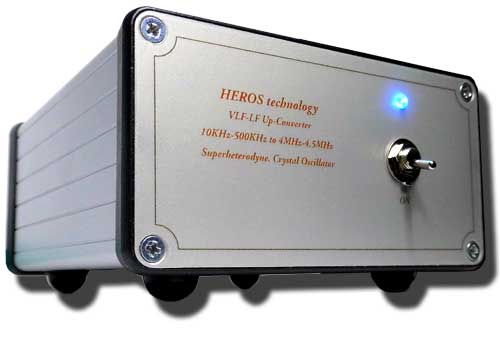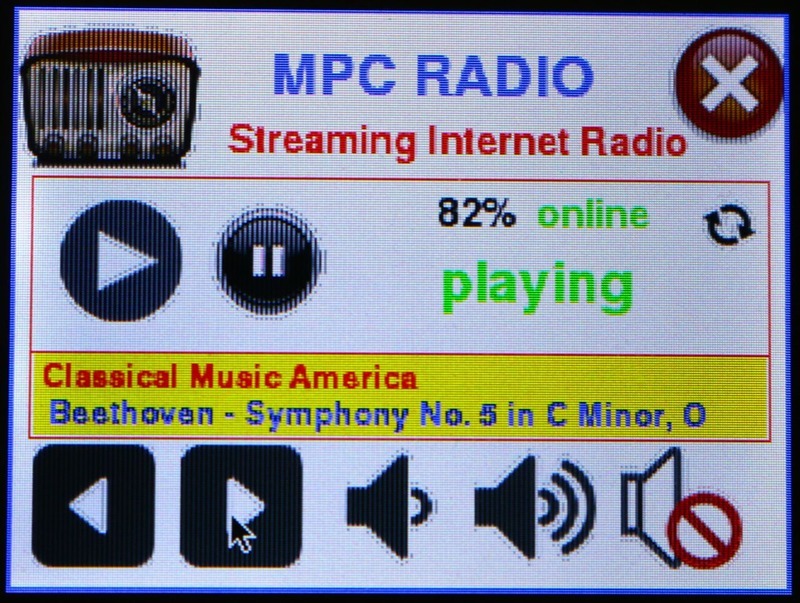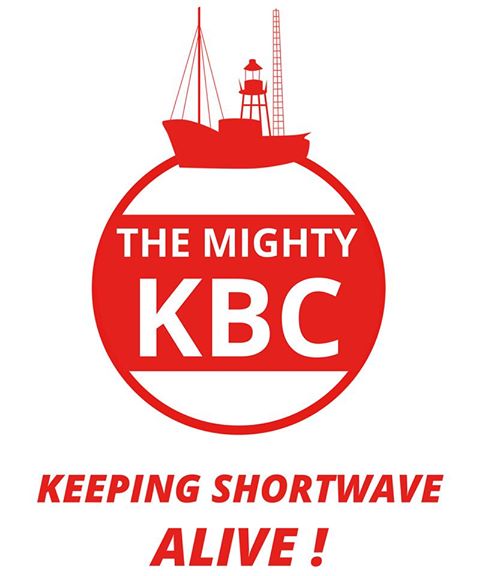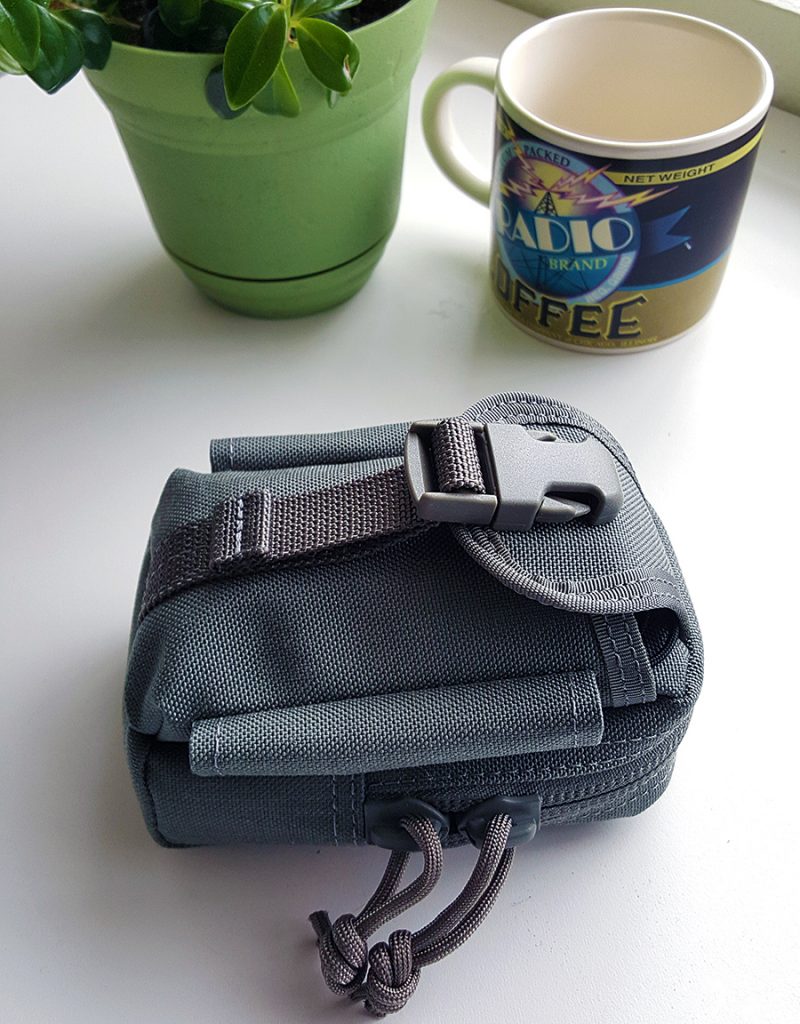 In a 2014 article, this site’s administrator Thomas Witherspoon introduced readers to the CIA’s Survival Kit which is housed in a superbly sturdy waistpack, the Maxpedition M-2. Thomas observed that the M-2 pouch is perfectly suited to holding the diminutive Sony ICF-SW100 receiver.
In a 2014 article, this site’s administrator Thomas Witherspoon introduced readers to the CIA’s Survival Kit which is housed in a superbly sturdy waistpack, the Maxpedition M-2. Thomas observed that the M-2 pouch is perfectly suited to holding the diminutive Sony ICF-SW100 receiver.
I was intrigued by that possibility, but only recently tried to combine the two after I resurrected another ICF-SW100 that fell silent to the chronic broken ribbon cable problem. Indeed, the radio is a perfect fit and the M-2 is impressively solid and well designed. I was not aware of the Maxpedition firm prior to learning of the M-2 bag, but I see in various forums they are a major player in well-made gear for the survivalist and outdoor enthusiast crowds. The M-2 is a very popular item, and one or more of the four available colors are sometimes out of stock at the manufacturer. Fortunately there are many sellers on Amazon and Ebay who have these waistpacks available.
What is EDC you may ask? It refers to “Every Day Carry”, the essentials that an individual deems necessary for their lifestyle or a particular activity. For me, an EDC bag is taken along on hikes or other outings to the countryside and typically contains a compact shortwave radio and related accessories. It’s always fun to stop for lunch or a break in a remote location and be able to search for interesting stations whenever the mood strikes.
This photo shows what I’m able to carry in the Maxpedition M-2 bag; a coffee mug is shown for size comparison. Contents of the “kit” include: 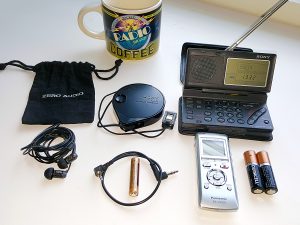
- The Sony ICF-SW100 receiver
- Zero Audio Carbo Tenore In-Ear Monitors & soft pouch
- Sony AN-71 reel-up antenna
- Panasonic RR-XS400 Digital Voice Recorder
- Short 3.5mm male-to-male stereo audio patch cable
- Two extra AA batteries for the Sony receiver
- An extra AAA battery for the Panasonic Digital Voice Recorder
A few comments on the contents. The Zero Audio Carbo Tenore In-Ear Monitors (IEMs) provide excellent audio quality for their price. They are among a handful of IEMs regularly recommended by budget-minded audiophiles on the popular Head-fi.org site. I like these IEMs not only for the audio quality, but also their small size (in the cloth bag) which barely fits into the M-2’s main compartment along with the ICF-SW100. Larger earbuds or IEMs might not fit the M-2 without being mangled by the hefty YKK zippers. One caution: the similar Carbo Basso model by Zero Audio is deemed by many to be overly heavy on the bass frequencies. I find the Carbo Tenore to be more than sufficient for bass heavy genres like Electronica.
The Panasonic RR-XS400 digital voice recorder has been out of production a few years, but is 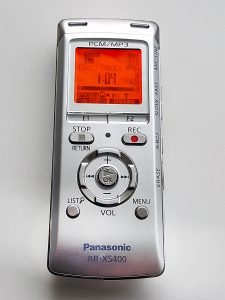 a highly capable and compact recorder. It contains a hidden USB plug for charging and data transfer, has a fully featured and backlit LCD display, built-in stereo microphones, switchable LINE/MIC inputs, and other useful features. In excellent used condition the RR-XS400 is worth about $50 USD in 2017, despite some Amazon sellers trying to move them at the original $280 price.
a highly capable and compact recorder. It contains a hidden USB plug for charging and data transfer, has a fully featured and backlit LCD display, built-in stereo microphones, switchable LINE/MIC inputs, and other useful features. In excellent used condition the RR-XS400 is worth about $50 USD in 2017, despite some Amazon sellers trying to move them at the original $280 price.
The extra AAA battery for the recorder slips into the front pouch of the M-2 bag along with the Sony AN-71 antenna. The additional AA batteries for the radio, however, are held in the two “pen loops” on the left and right of the M-2. Despite these loops being open-bottomed tubes, the fit is tight enough to hold the batteries securely.
Like every portion of the Maxpedition M-2 bag, the belt loop is proportioned perfectly and sewn with precision. With the Sony ICF-SW100 EDC “kit” secured to my belt on a hike, I’m assured of quick access to a DXing opportunity, such as when hiking the Naches Loop Trail near beautiful Mt. Rainier:

Guy Atkins is a Sr. Graphic Designer for T-Mobile and lives near Seattle, Washington. He’s a regular contributor to the SWLing Post.
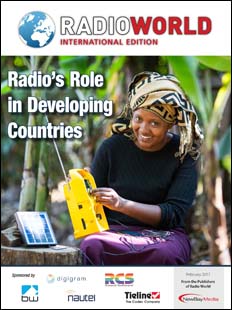 Many thanks to SWLing Post contributors, Bill Patalon and Dennis Dura for sharing a link to this free eBook download from the excellent RadioWorld Magazine.
Many thanks to SWLing Post contributors, Bill Patalon and Dennis Dura for sharing a link to this free eBook download from the excellent RadioWorld Magazine.




